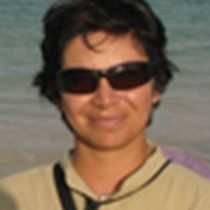Santa Cruz Island
We are back on the central realm of the archipelago. We went on to Puerto Ayora, the largest inhabited town in Galápagos. We had a great time visiting the Charles Darwin Research Center, and the town where we learned both about the life of the most emblematic creature of Galápagos, the giant tortoises, and also the lives of the locals who live on this island.
Perhaps for all of us one of the most striking things is how different each island is. Yesterday we closely observed the geology of Bartolomé and how arid it was, then we explored Santiago Island with its amazing coastal area; today's focus was the lush vegetation of the highlands, and of course the giant tortoises in the wild. For an island like Santa Cruz its high elevation works as a wall which helps to stop the passing clouds, plus its soil is rich in nutrients; these factors combined together result in large trees with epiphytes growing all over them. One can find several vegetation zones here; we were able to experience the coastal zone, transition zone, agricultural zone, and Scalesia zone. Now if these zones were different temperatures, then we could easily experience all the possible microclimates found here in Galápagos in less than forty minutes.
Some animals such as finches of different species can co-exist without generating a conflict with their feeding habits and their habitats; basically there is room for every one and their different ways of life, including humans. We could observe a vermillion flycatcher looking for some insects, a woodpecker finch using a tool to get its food from the old bark of the surrounding trees, and also small ground finches looking for small seeds in the bushes and on the ground. Every animal has its niche and respects each others' habits. What a paradise, all full of life in different shapes and forms.
We are back on the central realm of the archipelago. We went on to Puerto Ayora, the largest inhabited town in Galápagos. We had a great time visiting the Charles Darwin Research Center, and the town where we learned both about the life of the most emblematic creature of Galápagos, the giant tortoises, and also the lives of the locals who live on this island.
Perhaps for all of us one of the most striking things is how different each island is. Yesterday we closely observed the geology of Bartolomé and how arid it was, then we explored Santiago Island with its amazing coastal area; today's focus was the lush vegetation of the highlands, and of course the giant tortoises in the wild. For an island like Santa Cruz its high elevation works as a wall which helps to stop the passing clouds, plus its soil is rich in nutrients; these factors combined together result in large trees with epiphytes growing all over them. One can find several vegetation zones here; we were able to experience the coastal zone, transition zone, agricultural zone, and Scalesia zone. Now if these zones were different temperatures, then we could easily experience all the possible microclimates found here in Galápagos in less than forty minutes.
Some animals such as finches of different species can co-exist without generating a conflict with their feeding habits and their habitats; basically there is room for every one and their different ways of life, including humans. We could observe a vermillion flycatcher looking for some insects, a woodpecker finch using a tool to get its food from the old bark of the surrounding trees, and also small ground finches looking for small seeds in the bushes and on the ground. Every animal has its niche and respects each others' habits. What a paradise, all full of life in different shapes and forms.




